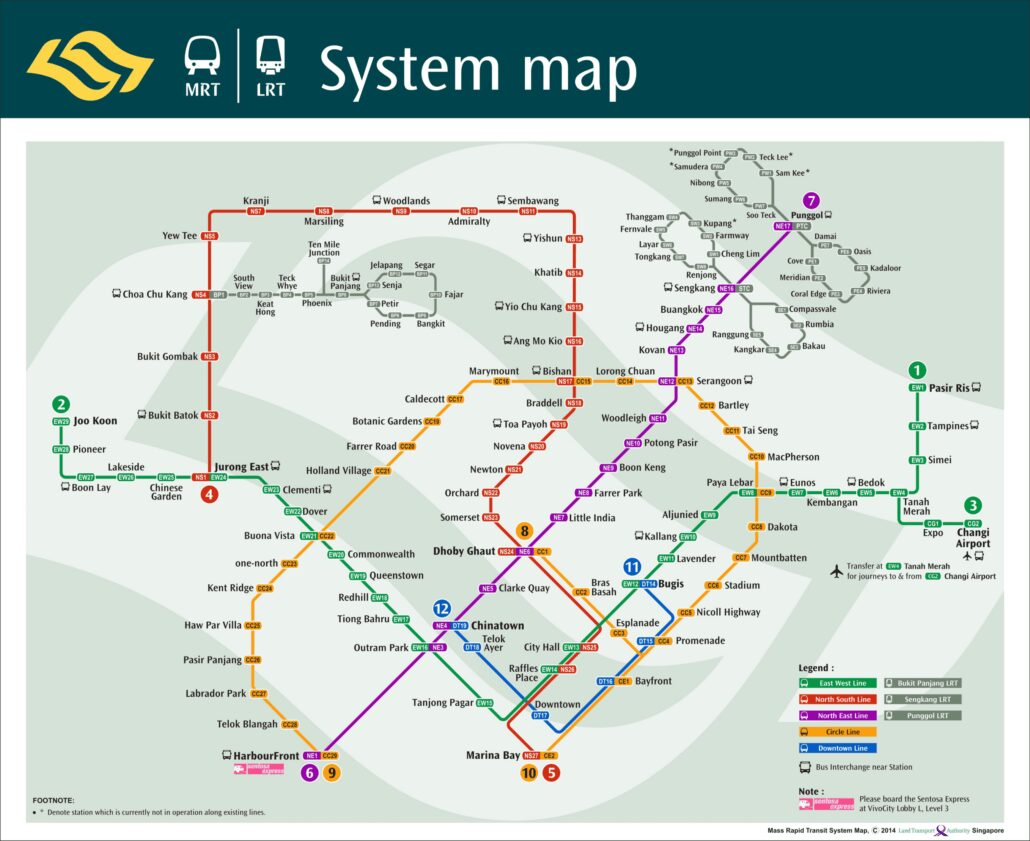The 2014 MRT map records a critical turning point in transportation history for Singapore: the city’s rail network would expand to become comprehensive. With new lines and stations, this map represents the growing connectivity that links the island’s busy urban centres with its more laid-back suburbs. In 2014, Design Works unveiled its latest masterpiece: the MRT Map, fully updated for Singapore’s first global city. Clear and easy to use, this map offers travellers from all over an intuitive guide for navigating Singapore’s diverse landscape–from the historic enclaves of Chinatown to Punggol’s modern developments.
This new version has also improved connection with interchange stations, making it easier than ever for people who wish to switch lines in between and then go on to their destinations. Whether you’re an everyday commuter or a first-time tourist, the MRT Map (2014) is an indispensable tool for experiencing Singapore’s lively culture, shopping centres, and natural splendour. It is more than just an almanack for travel; it serves as a still snapshot of a city on the move, changing to meet the needs of its residents while at the same time offering visitors seamless, efficient, and enjoyable trips away from home.

